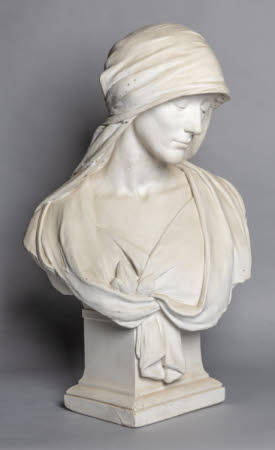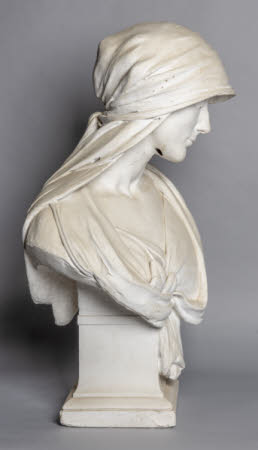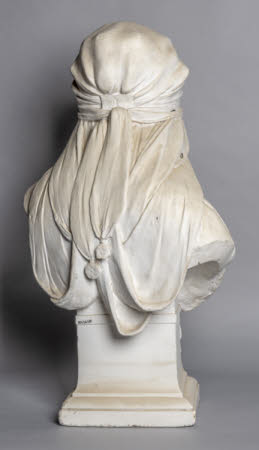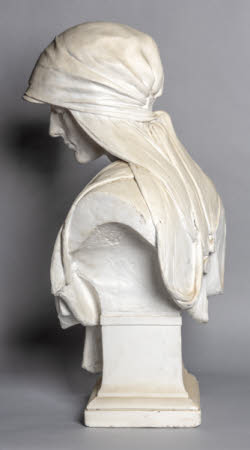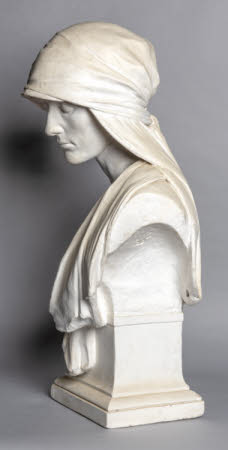Self-portrait
Emmeline Mary Elizabeth Welby-Gregory (1867 - 1955)
Category
Art / Sculpture
Date
circa 1887 - 1900
Materials
Plaster
Measurements
740 x 480 x 390 mm
Place of origin
England
Order this imageCollection
Belton House, Lincolnshire
NT 436834
Caption
Born Emmeline Welby-Gregory, ‘Nina’ Cust was a writer, editor, translator, poet and sculptor. She was descended from a line of intellectual women – her mother, Victoria, published extensively on the philosophy of language, while her grandmother Emmeline was a famous travel writer and poet. Cust is now recognised as one of the great creative women of Belton House, Lincolnshire. But this was not always the case. The troubled circumstances of her marriage to Belton’s heir, Harry Cust (1861– 1917), once dominated her narrative – an example of how women’s histories can become skewed or diminished. Some, but probably not all, of Nina Cust’s sculpture is known today. Signed portrait busts in plaster, marble and metal exist at Belton, and in its church there is a monumental marble effigy of Harry – staggering in its scale and emotional weight. Cust was herself the subject of portraits by the Arts and Crafts enamellist Alexander Fisher, and by the Symbolist painters George Frederic Watts and John Collier. Contemporary accounts speak of her artistic interests and aesthetic sensibility. She was twice depicted by the sculptor Sir Alfred Gilbert, his portrait of her exhibited at the Royal Academy in 1900. Amateur (non-professional) sculpture was practised by women in Nina’s social circle. Associated with an elite cultural group known as the ‘Souls’, it may have been through the influence of fellow Soul and exhibited artist Violet Manners, Duchess of Rutland (1856–1937), that she took up sculpture. Sir Alfred Gilbert, who was supported by Manners, may also have given her sculpture lessons. Indeed, Gilbert’s bust of Nina (Ackland Museum, Chapel Hill) and her self-portrait share clear similarities. Nina Cust continued to sculpt well into the 20th century, exhibiting a bust of her niece Joan at the Royal Academy in 1906. In addition to practising sculpture, she published books and academic articles, and was the first to translate into English the French philologist Michel Bréal’s landmark book Semantics: Studies in the Science of Meaning (1900).
Summary
Plaster, Self-portrait, Emmeline 'Nina' Cust, née Welby-Gregory (1867-1955), c. 1887 - 1900. A head and shoulders self-portrait bust of Emmeline 'Nina' Cust, heavily veiled, eyes downcast to proper left. The sitter wears classical drapery, with leaves at the breast. A plaster model for a marble bust (departed).
Makers and roles
Emmeline Mary Elizabeth Welby-Gregory (1867 - 1955), sculptor
References
Conroy, Rachel, Women Artists and Designers at the National Trust, 2025, pp. 158-9

